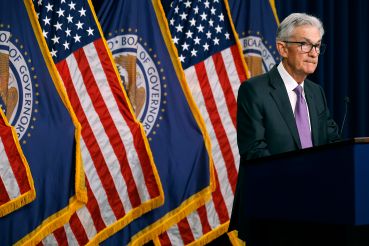Government Sector’s Office Policies Put $26B in CMBS Debt at Risk
The multifamily sector is also feeling a significant trickle-down effect
By Brian Pascus April 3, 2023 2:39 pm
reprints
Uncle Sam’s reluctance to embrace in-person office work could threaten a hefty amount of commercial mortgage-backed securities (CMBS).
A new report from Trepp found that roughly $26 billion of outstanding CMBS loans are tied to 1,365 national properties occupied by workers employed by federal, state or municipal governments. But as hybrid work becomes increasingly popular and return-to-office policies remain in flux, especially for federal employees, a number of metropolitan areas with billions of dollars in CMBS exposure predicated on government office tenants could face economic headwinds.
“It’s not pretty, in part because we haven’t seen any strong form requirement of return-to-office from the government sector,” said Stephen Buschbom, research director at Trepp. “The knock-on effects, whether it’s from municipality office users taking cues from the federal government, or more problematically from an economic standpoint, is what the low office-utilization rate from the federal government means for the multifamily sector.”
Buschbom noted that prior to 2020 many metropolitan office districts delivered new multifamily units to the market — or fed multifamily construction loans into collateralized loan obligations tied to new construction — with the anticipation of thriving economic sectors backed at least in part by the daily occupancy of government workers.
“The rents and occupancy in the multifamily space kind of depend on the pre-pandemic office utilization rates,” Buschbom said. “If those office workers continue to be absent from the market, then what was [once] the original justification for delivering additional multifamily units to market, then that model has blown up.”
The dearth of office space currently filled by government workers cannot be taken lightly. With more than 43 million square feet leased by the General Services Administration (GSA) — the agency that provides office space to government tenants — the federal government is the largest office tenant in the entire U.S.
Of the $5.5 trillion of debt that finances the $20 trillion commercial real estate and multifamily market, GSEs comprise $1.1 trillion (or 20 percent) of commercial mortgage holdings, according to The Real Estate Roundtable, an industry trade group.
“If the federal government finds new ways to enhance hybrid or remote work and their need for office space decreases, the occupancy on these properties could continue to decline, where the metropolitan statistical areas (MSA) that show already-low occupancies could face greater challenges,” the Trepp report concluded.
Not surprisingly, no two MSAs have more CMBS exposure tied to them than New York-New Jersey, with its vast network of city and state agencies, and Washington, D.C./ Northern Virginia, which is home to the federal government’s various agencies and departments. Together the two metropolitan areas have $10.3 billion in CMBS loan exposure tied to properties backed by government tenants.
Vacancies at office buildings holding government tenants are increasing across the board.
Roughly 13 percent of New York–New Jersey’s government office properties carried occupancy rates between 60 percent and 80 percent in 2022, according to Trepp, while a quarter of all D.C. and Northern Virginia government office properties carried occupancy rates between 60 percent and 80 percent in 2022.
Los Angeles, which has nearly $2 billion worth of CMBS exposure tied to government office properties, carried an occupancy rate of between 60 percent and 80 percent for roughly 40 percent of its properties last year, and nearly 5 percent of L.A. government properties had an occupancy rate of less than 60 percent.
Christopher Thornberg, founding partner at Beacon Economics, viewed the Trepp data and said the problems in the CRE market are not systemic and that overall workforce return-to-office rates are increasing in the U.S., even if they lag behind Europe and Asia.
“What we’re seeing here is not a result of some fundamental change in the structure of office employment,” said Thornberg. “Even a modest amount of decline in demand in these big commodity markets will cause some havoc, and you’re seeing it play out in places like D.C.”
Thornberg emphasized that it’s impossible to know the risk facing the $26 billion of outstanding loans tied to government properties until it’s clear what type of office stock this CMBS debt is leveraged against.
“If you’re talking about the newest coolest buildings, they’ll be fine,” he said, “But has the CMBS debt been leveraged to build those fancy new buildings, or has it been leveraged to refinance old buildings? We don’t know.”
The Trepp report noted, however, that if occupancy rates continue to fall and vacancies increase, then net operating income on these properties could decline as well, leading to a lower debt-service coverage ratio for these loans, and thus less cash flow on the properties to the holders of CMBS.
Other metropolitan areas that saw lower occupancy rate in their government office properties included the Philadelphia-Camden-Wilmington area (15 percent of properties with occupancy rates less than 60 percent), the Boston-Cambridge-Newton area (38 percent of properties with occupancy rates less than 60 percent), the Denver-Aurora-Lakewood area (13 percent of properties with occupancy rates less than 60 percent), and the Chicago metropolitan area (nearly 50 percent of properties with occupancy rates between 60 and 80 percent).
The public sector sector sets the standard of work policies for the private sector to follow, and any return-to-work policy espoused by the federal government will have a cascading effect on the CRE office market, according to Trepp.
As CO pointed out in February, government agencies have been loath to act, with unions protecting remote work and work-from-home privileges as a boon to effectiveness and recruitment, and leadership reluctant to downsize and lose budget allocation
Buschbom emphasized that the federal government has chosen to avoid implementing a widespread return-to-office policy with the national unemployment rate standing at 3.6 percent.
“The federal government has taken a very conservative approach,” he said. “They are trying to compete with the private sector for employees and part of the employee retention strategy is to continue to use work-from-home flexibility to attract and retain employees in a tight labor market.”
Brian Pascus can be reached at bpascus@commercialobserver.com


